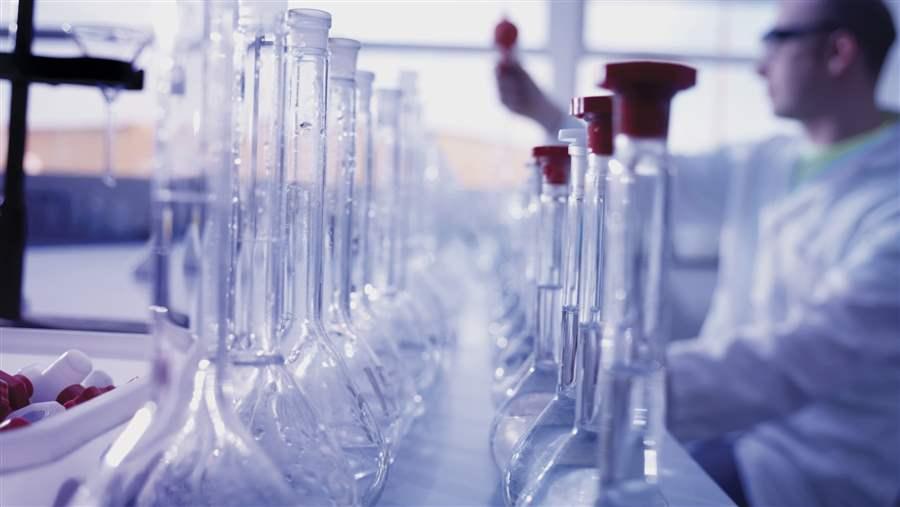The World Is Running Out of Antibiotics
Analyses of global antibiotic pipeline show insufficient drugs in development to meet growing threat of resistance
Reinvigorating the pipeline of antibiotics in development is more critical today than ever, as increasingly hard-to-treat bacteria continue to emerge. As part of ongoing work to spur the creation of urgently needed new antibiotics, The Pew Charitable Trusts’ antibiotic resistance project and the World Health Organization (WHO) have both released new analyses of the pipeline of products in clinical development with the potential to treat or prevent serious drug-resistant bacterial infections. And the findings are grim.
These analyses reveal that, worldwide, too few new antibiotics are in development to treat the most dangerous infections. Of the drugs in development, only 12 have the potential to address the most critical Gram-negative pathogens on the WHO antibiotic-resistant priority pathogens list—carbapenem-resistant Enterobactericaeae, Pseudomonas aeruginosa, and Acinetobacter baumanii. Furthermore, bacteria resistant to one antibiotic in a class are more likely to be resistant to others in that class, yet only approximately 1 in 4 antibiotics represents entirely new drug classes or mechanisms of action to combat bacteria that are constantly evolving. This is even more concerning when considering that historically, only 1 in 5 of the infectious disease drugs that enter Phase 1 clinical testing will ultimately be proven safe and effective enough to make it to market.
Fortunately, there has been progress in recent years, with some promising initiatives under way to help fix the broken pipeline. Collaborative efforts aimed at answering priority scientific questions at the root of the decades-long drought in new types of antibiotics—such as Pew’s Shared Platform for Antibiotic Research and Knowledge and the Innovative Medicines Initiative’s Translocation project—are encouraging. And so are public-private partnerships like the Global Antibiotic Research & Development Partnership and CARB-X, which are working to advance the development of promising drug candidates.
However, as vital as antibiotic innovation is, it’s important to also remember that no magic new antibiotic will solve the problem of antibiotic resistance. Innovation alone will not suffice. The world must also be good stewards of the antibiotics we have, and take care to preserve their effectiveness by using them appropriately and only when necessary.
Moving forward, Pew and the WHO plan to continue to update pipeline resources regularly, in hopes that researchers, policymakers, and other innovation stakeholders will use them to track how the portfolio of products in development stacks up against the most dangerous superbug threats, to inform new and ongoing drug research and development, and ultimately to shed light on the urgent need for innovative treatments for patients with infections caused by drug-resistant bacteria. Only through continued domestic and international collaboration can we contain this global threat and protect current and future patients from life-threatening antibiotic-resistant infections.
Kathy Talkington directs The Pew Charitable Trusts’ antibiotic resistance project; David Visi works on the project.
Sarah Paulin works in the World Health Organization’s Department of Essential Medicines and Health Products, setting R&D priorities for new antimicrobials and also promoting antimicrobial stewardship.


Tracking the Pipeline of Antibiotics in Development


Tracking the Global Pipeline of Antibiotics in Development


Assessment of Nontraditional Products in Development to Combat Bacterial Infections, March 2019
Because the conventional antibiotics pipeline remains so thin, finding new approaches is critical








